Co Loa Festival: Celebrating Vietnam’s Rich Cultural Heritage
The Co Loa Festival, held in honor of King An Duong Vuong, is one of Vietnam’s most culturally significant events. This festival commemorates a historical legend intertwined with Vietnam’s early struggles for independence, strength, and cultural pride. Let MOTOGO Tours explore this festival.
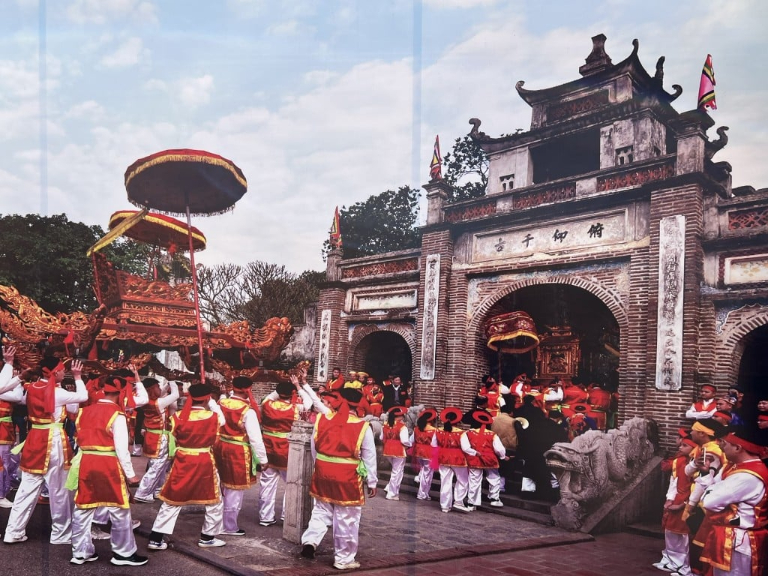
Location and Time of the Co Loa Festival
The Co Loa Festival takes place in Co Loa Village, Dong Anh District, which is located about 20 kilometers north of Hanoi, the capital of Vietnam. The Co Loa Citadel, an old historical monument from the third century BC, is well-known in the area. Being the capital of the Au Lac Kingdom and the fabled residence of King An Duong Vuong, this citadel is quite culturally important.
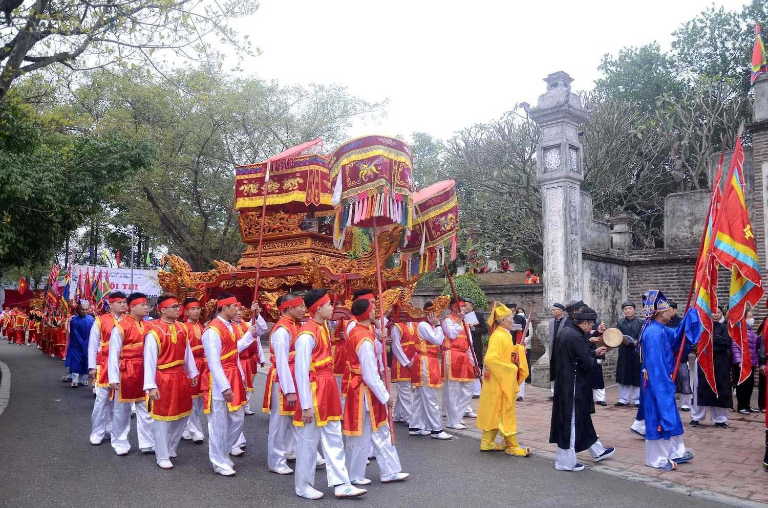
A UNESCO World Heritage contender, the vast Co Loa Citadel site boasts remnants of old walls, moats, and gateways. These old relics give the event a beautiful backdrop and a magical touch to the celebrations. Lush scenery surrounds the settlement and the citadel; meadows and rivers accentuate their beauty and tranquilly of the site.
When is the Co Loa Festival Celebrated?
The Co Loa Festival is customarily celebrated from the sixth to the eighth day of the first lunar month, which typically falls between late January and early February. This period is important since it not only represents the start of the lunar new year but also celebrates the founding of the Co Loa Citadel and pays tribute to King An Duong Vuong, the creator of the old Au Lac Kingdom.

How to Get There
Road from Hanoi allows one to visit the Co Loa Festival either by public transit or private vehicle. From the principal bus stations in Hanoi headed toward Dong Anh District, visitors can get a local bus to Co Loa Village. On the other hand, Hanoi Motorbike Tours present a more practical choice, usually incorporating transportation, a guide, and knowledge of the festival’s customs and history.
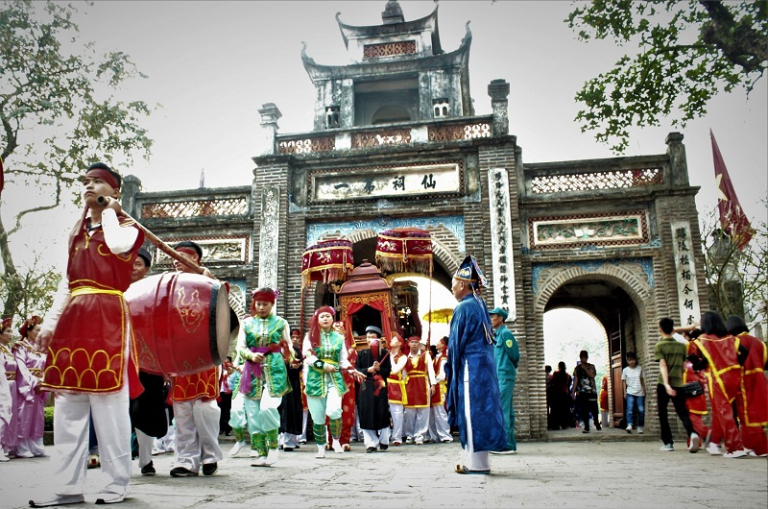
Historical Significance and Origins of the Co Loa Festival
Celebrating the famous King An Duong Vuong, who established the Au Lac Kingdom about the third century BC, the Co Loa Festival is firmly anchored in the ancient history of Vietnam. Just outside Hanoi, the Co Loa Citadel is thought to be the first capital of ancient Vietnam and hosts the celebration.
The Legend of King An Duong Vuong
An Duong Vuong is renowned for founding the Au Lac Kingdom and building the Co Loa Citadel, thought to have been erected with the aid of a golden turtle. The spiral form of the citadel represents the life’s and death’s cycle. Although the king’s rule was prosperous, his country collapsed from treachery by his daughter My Chau and her lover, Trong Thuy. An Duong Vuong tragically died and the kingdom was destroyed as a result of this treachery.
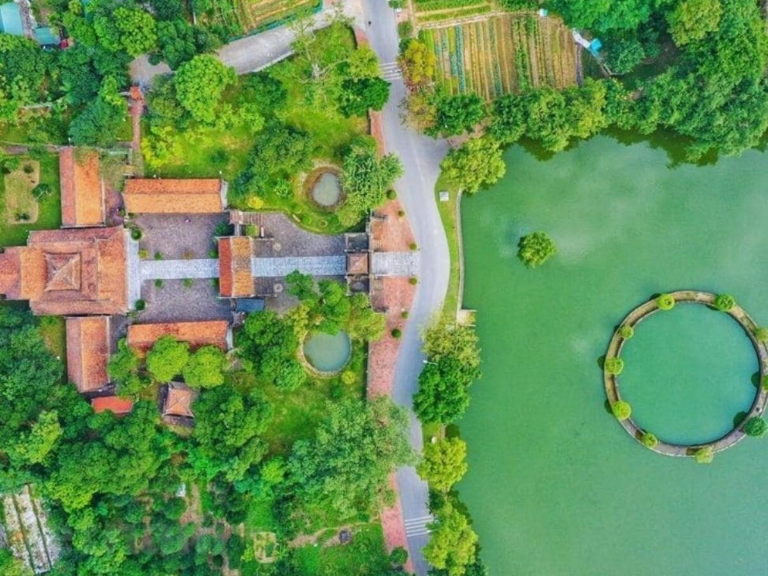
Co Loa Citadel’s Importance
Being among Vietnam’s oldest archeological sites, the Co Loa Citadel is extremely valuable historically. With its distinctive spiral form suggesting continuity and defense, it was a pillar of the kingdom. For those fascinated in Vietnam’s past, the remains of the citadel still attract a lot nowadays.
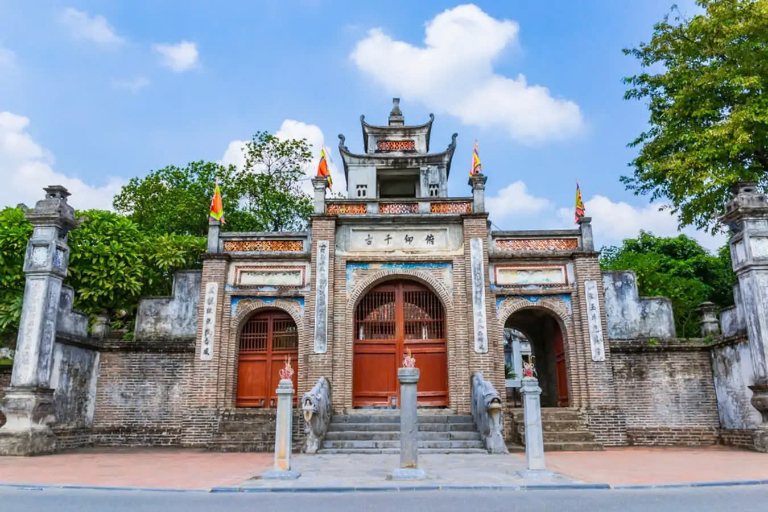
Cultural Significance
The Co Loa Festival connects to Vietnam’s national character rather than the honors of the king. It honors the victories and losses of the Au Lac Kingdom, therefore reinforcing ideals of loyalty, bravery, and wisdom that have molded Vietnamese character over millennia. By means of ceremonies and offerings, the celebration lets contemporary Vietnamese people respect their ancestors and protect their cultural legacy.
Though the Co Loa Festival has changed with time, King An Duong Vuong and the Co Loa Citadel always take front stage. Today it combines history with contemporary celebrations by including processions, folk games, and cultural events. Still a cornerstone of Vietnam’s Tet (Lunar New Year) festivities, it helps to bind the past and present together.
>>> Let’s see: Vietnam Independence Day: History, Significance, and Modern Celebrations
How the Co Loa Festival is Celebrated
Deeply ingrained in the legacy of Hanoi, the Co Loa Temple Festival is among the most important yearly celebrations. Celebrated in the ancient hamlet of Co Loa in Dong Anh District, this event honors the history and mythology around the Co Loa Citadel, a site associated with the fabled An Duong Vuong and his renowned golden turtle god, Kim Quy.
Preparing for the Co Loa Festival
The residents of Co Loa start getting ready for the next celebration following the Lunar New Year (Tet). Choosing officials—known as the “Quan Dam,” or “Thu Tu,” who are in charge of preserving the temple grounds’ holiness is a crucial chore. The village council chooses these leaders, who are in charge of supervising the spiritual elements of the celebration, including temple ceremonies and incense offering.

Representing the eight towns around the temple, Dai Bi, Van Thuong, Thu Cuu, Co Loa, San Da, Cau Ca, Mach Trang, and Xep, the “Bat Xa” is a council. Every community is supposed to help with the planning of the celebration and guarantee that all elements of it are carried out with regard for customs. The great celebration in the first lunar month, called the “Phong Dang Hoa Coc,” marks a significant cultural event for the community and marks the end of this preparation period.
The Sacred Rituals of the Co Loa Festival
Deep respect for the gods and historical personalities of the area—especially An Duong Vuong, the creator of the Co Loa Citadel, and his daughter, Princess My Chau—is fundamental in the Co Loa Festival. Starting on the sixth day of the Lunar New Year, the ceremony consists in a somber procession headed toward the An Duong Vuong Temple.

Lead by ceremonial flags and the vivid “Lo Lo Bat Buu,” eight treasures, the procession is an amazing sight. With designated “trao cung,” or men selected for their purity and religious obligation, this procession is a very orderly ceremony with the elaborate palanquins bearing the souls of the gods carried by. Often men selected for their piety, the carriers must follow a rigorous code of behavior including covering their mouths with scarlet scarves to protect spiritual purity throughout the event.
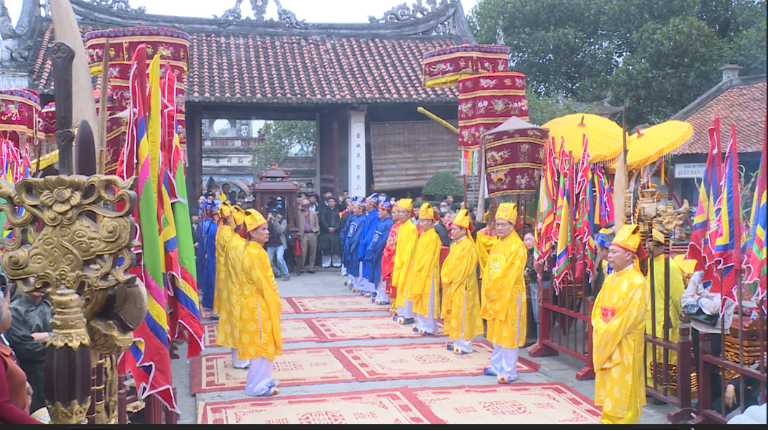
From the Upper Temple (Den Thuong) to the major village meeting spot, the procession is a complex custom. Four young men waving the ceremonial flags carry the palanquins of every one of the eight towns; the procession is accompanied by traditional musical instruments like the flute and drum. As the procession moves around the hamlet, these sounds establish a holy and harmonic environment.
Every village carries particular ceremonies honoring the gods once the procession arrives to the Nguy Triều Dinh. The heart of the worship, the Co Loa village conducts a long ceremony before going back to its hamlet. After finishing their ceremonies, the neighboring villages join in the happy and vibrant celebration known as “Phan Hoi,” sometimes the merry portion.
The Festivities: A Blend of Tradition and Fun
The Co Loa Festival’s joyful component is when the community gathers in celebration. Among the most often seen presentations is Water Puppetry, a distinctive Vietnamese art form. Usually, the performances take place at the Ngoc Giang well, right in the center of the community. Here, the villagers engage in impromptu performances of traditional songs, particularly “Quan Ho,” typically on dragon boats.
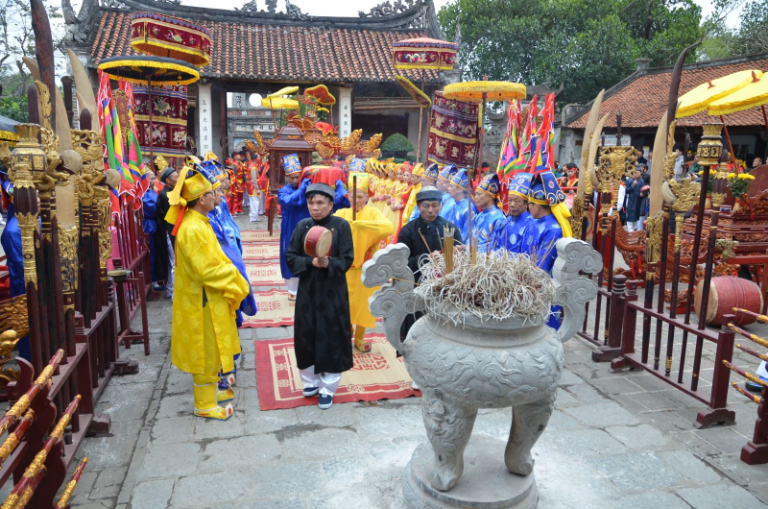
Dramatic reenactments of the fable of Princess My Chau and her sad love affair with the invader Trong Thuy also abound at the festival. Emphasizing the need of alertness and loyalty to one’s motherland, traits originally embodied by the famous leaders of Co Loa, this theatrical production offers both an entertainment value and a moral message.
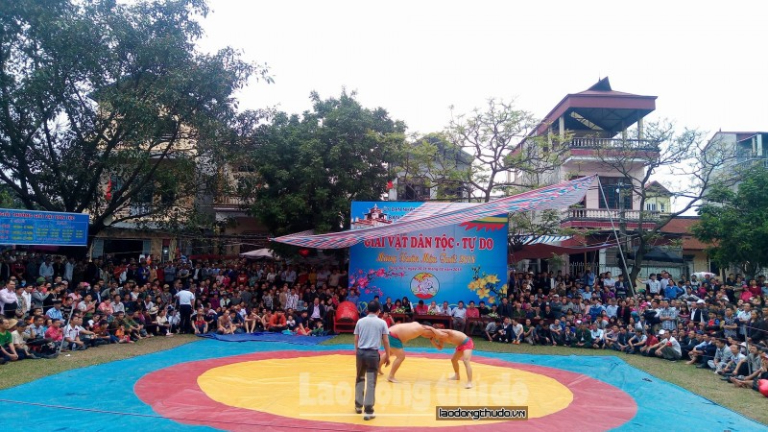
For those who enjoy traditional games, the Co Loa Festival presents a range of exciting events inviting both residents and guests. Among these are human chess, a huge form of the well-known board game in which people physically move across a big board to replicate the movements in the game. Another popular sport is wrestling (đấu vật), which lets young guys show their bravery and will.
>>> Exlore Tet Nguyen Dan (Lunar New Year) – Vietnam’s Most Important Festival
Key Attractions at the Co Loa Citadel and Temple
Beyond the celebration, anyone looking at Hanoi’s cultural heritage should visit the Co Loa Citadel since it holds great historical relevance. Many significant citadel sites have links to Vietnam’s tales and ancient past.
The Upper Temple (Den Thuong)
Designed for An Duong Vuong, this is the major site of prayer. Among the various important relics housed at the temple are two fabled horses, one red and one white, which are supposed to have been instrumental in the building of the castle. The monarch himself has a statue there. Two finely carved stone dragons that epitomize Le Dynasty architectural taste line either side of the temple entryway.
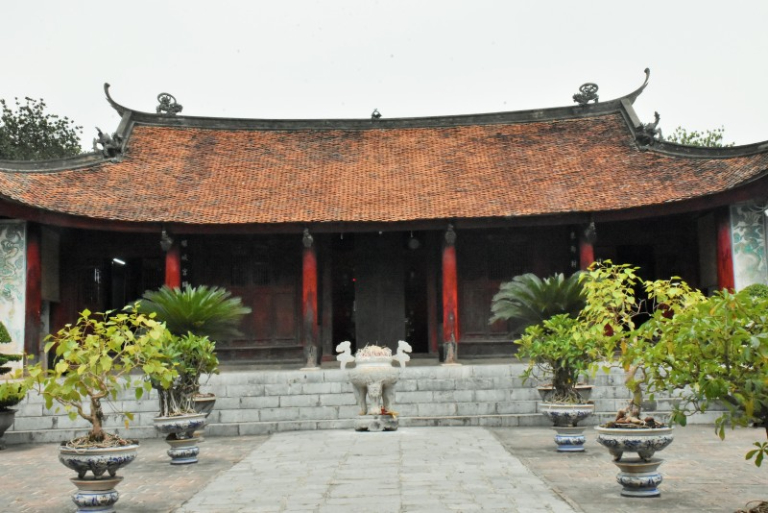
The Tomb of My Chau
Another holy place within the Co Loa Citadel is the tomb of Princess My Chau behind a centuries-old banyan tree. Local tales have it that the stone that seems to be fashioned like a severed human figure stands in for My Chau, tossed into the river following her terrible destiny. An inscription from poet Chu Manh Trinh, who via verse immortalized My Chau’s story, marks the monument.
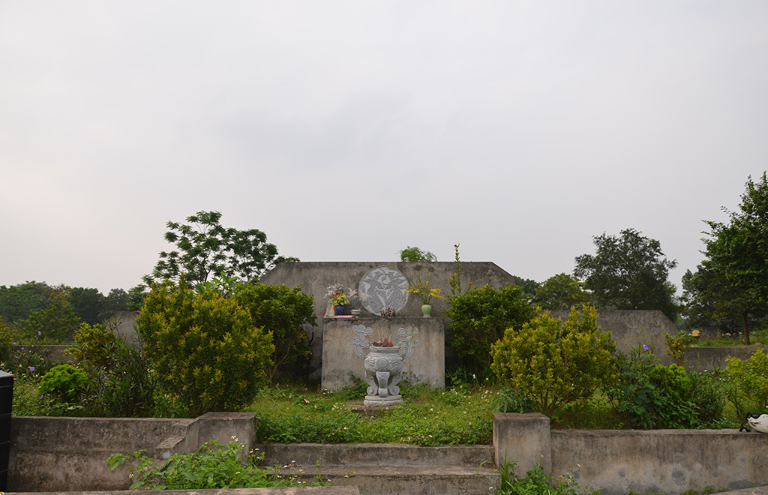
The Temple of Cao Lo
Dedicated to Cao Lo, a well-known general under King An Duong Vuong, this temple pays tribute to the man allegedly in charge of designing the “Lien Chau” crossbow, meant to guard the country. Nearby, tourists can observe the remnants of several antique bronze arrows unearthed during archeological digs; the little shrine features a statue of Cao Lo wielding his renowned crossbow.
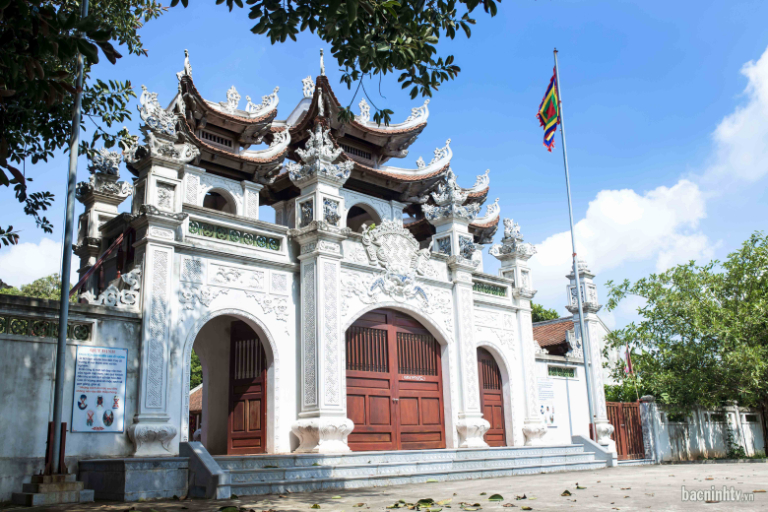
The Co Loa Festival is a vivid reminder of Vietnam’s legacy, resiliency, and communal energy. Honoring An Duong Vuong and adopting age-old customs helps the Co Loa people to preserve their culture for next generations. Basically, this celebration is a link between the past and the present that lets people from many backgrounds enjoy Vietnam’s ageless character.
Related posts:

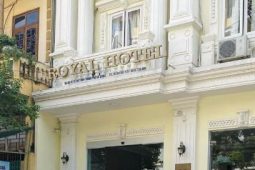



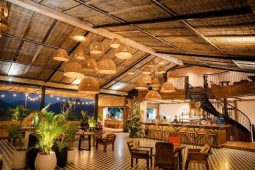

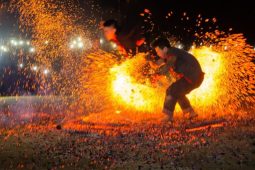
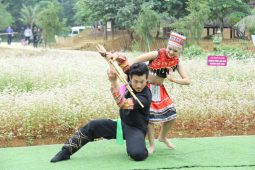
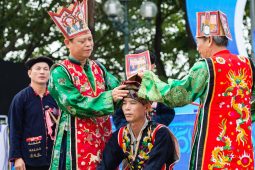

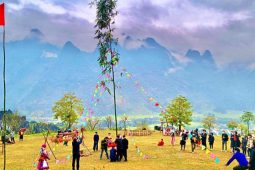

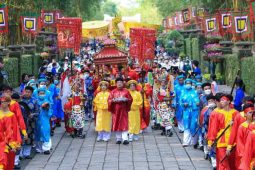
Be the first to comment!